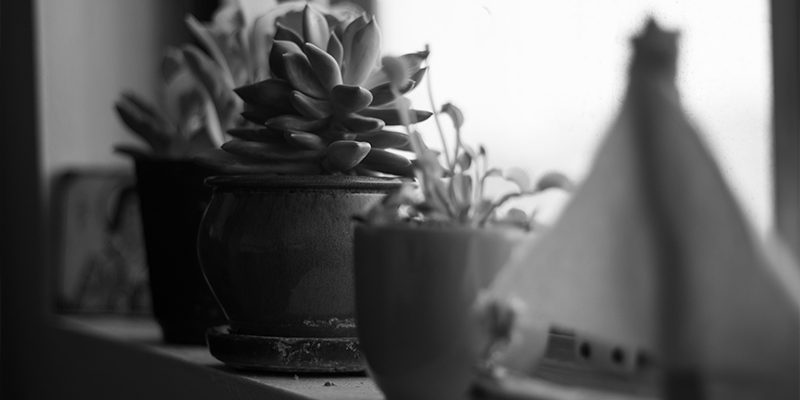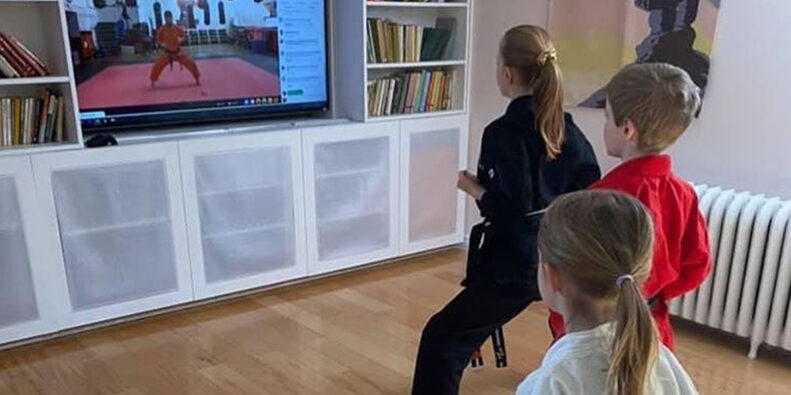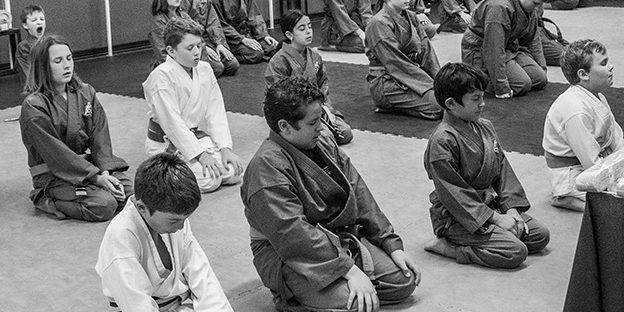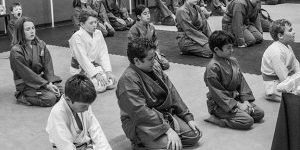10 Karate Terms That You Need to Know
Stemming from a world steeped with deep history and traditions, karate comes with a wealth of lingo. From movements to numbers and all in between, there’s a name for that. How many can you list? Here are 10 karate terms that every student should add to their mental martial arts dictionary.
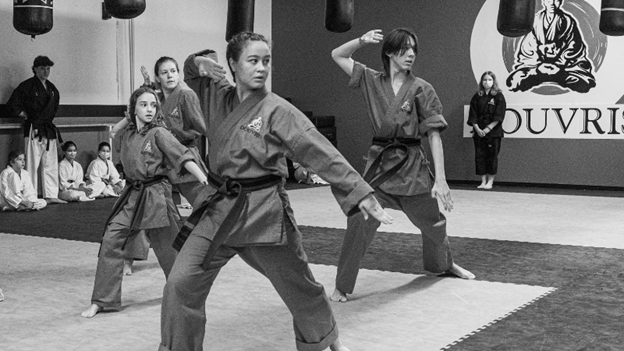
1. Kata
Arguably one of the most important words in the karate vocabulary is ‘kata’. This refers to one’s form and intricately choreographed martial arts movements. Katas are practiced and memorized and are essential in generating muscle memory for various techniques.
2. Dojo
Dojo; a word we know well, but maybe not exactly. Dojo is often used to describe a martial arts center, building, or location. However, it more specifically refers to the room or hall in which martial arts are physically practiced.
3. Gi
Gi (pronounced ghee) is the formal and traditional Japanese name for a karate uniform. Today, we have many phrases that describe just that, but this is the name from which it originally stemmed.
4. Obi
Oftentimes considered the most important element of one’s gi is their belt, traditionally referred to as an obi. Tied around the waist and worn proudly, this piece varies in colour depending on a student’s level of achievements.
5. Rei
Respect and karate always go hand-in-hand. Especially so amongst your instructors and peers, executing a true and constant state of respect is a trait of a skillful student. Rei follows these lines and refers to the act of bowing. This can be performed towards anyone in the dojo, but oftentimes is done so before a match or to one’s instructor at the end of a class.
6. Ki
Ki is a word that internally may mean something different to everyone. By definition, it refers to the spirit or energy of a person. In a deeper sense, intrinsic energy. This is developed through proper breathing and strengthening exercises along with mental focus.
7. Dan
Modernly referred to as belt grading, dan means just that. The dan ranking system is used to determine one’s level of ability and belt colour grading. There are six belt colours including: white, orange, blue, yellow, green, brown, and of course- black. All of which represents a level of skill and achievement oftentimes accomplished over years of practice.
8. Sūji Simply put, sūji are numbers. There are slight differences in the ways in which numbers are said in English vs. Japanese. See below for how the languages compare:
| Japanese Term | English Term |
| Ichi | One (1) |
| Ni | Two (2) |
| San | Three (3) |
| Shi (yon) | Four (4) |
| Go | Five (5) |
| Roku | Six (6) |
| Shichi (nana) | Seven (7) |
| Hachi | Eight (8) |
| Ku (kyū) | Nine (9) |
| Ju (jū) | Ten (10) |
9. Mokuso
Mokuso is a physical state of meditation, relaxation, and thinking. The physical position incorporates a kneel, straight sit, proper hand and arm positioning, eye focus, and breathing technique. Mentally, a process of mental focus, positional awareness, and ‘letting thoughts go’ is absorbed. Together, a perfect mokuso is met.
10. Sensei
Some could say karate really is not karate without our inspiring senseis. A sensei is an official instructor and teacher of martial arts. This is used as a title of honour for those who are remarkable in their field.
Our karate programs are offered at every Douvris location. Select your desired dojo from our list of 9 locations across the Greater Ottawa Area. From there, you can view the dojo’s class schedules, contact information, and enquire with the team directly to get yourself or your family enrolled.

